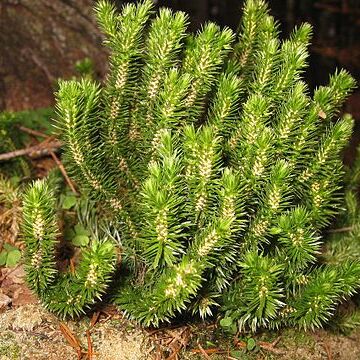Plants terrestrial. Stem erect or ascending, 10-30 cm, 1.5-3.5 mm in diam. at middle, together with leaves 1.5-4 cm wide, 2-4 times dichotomously branched, upper portion often with bulbils. Leaves sparse, attached at right angles with stem, lustrous, narrowly elliptic, conspicuously contracted toward base, straight, 1-3 cm × 1-8 mm, thinly leathery, both surfaces glabrous, midrib conspicuously raised, base cuneate, decurrent, petiolate, margin straight and not crispate, irregularly toothed, apex acute or acuminate; teeth acute at apex, coarse or slightly small. Sporophylls homomorphic with trophophylls; sporangia visible on both sides of sporophylls, yellowish, reniform.

